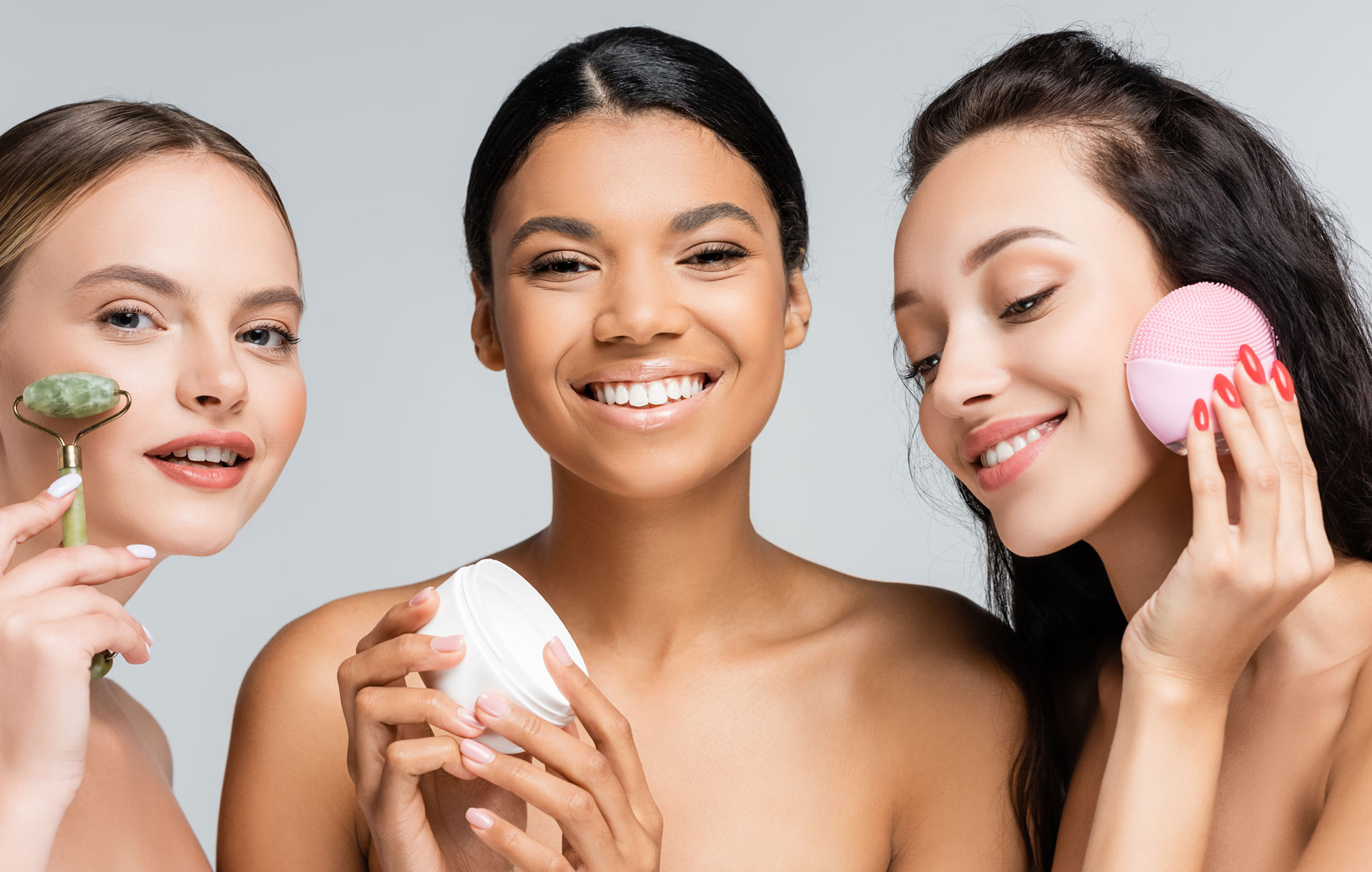Protecting and preventing the skin’s microbiome with a less is more approach to skincare
The understanding of our skins Microbiome has recently taken the skincare spotlight in a renewed and more in-depth way. What is our skin’s microbiome? Our microbiome is the tapestry of bacteria, fungi, & viruses that cohesively lives (yes lives) on our skin and plays a crucial role in maintaining the health and integrity of our skin’s protective barrier. Additionally, the skin microbiome protects your skin from environmental elements, UV rays, sun exposure, oxidative and free radical damage, as well as allergens, and pollution.
There are 3 zones of microbiomes on our body, including:
● Dry zones: Arms, legs, lower back
● Wet Zone: Groin, underarms
● Oily Zone: Face, upper chest, and upper back
Each one of these zones are home to completely different microbiomes. Our Oil zones secrete sebum to coat your skin. This protects and prevents it from drying out while keeping unwanted germs or pathogens from disrupting our epidermal harmony.
[ihc-hide-content ihc_mb_type=”show” ihc_mb_who=”2,4,6,7,5″ ihc_mb_template=”3″ ]
When our client’s skin microbiome is in balance, you will notice nothing in the way of skin discomfort. When the microbiome of your client’s skin is compromised you may be treating conditions such as Acne, Eczema, Dry Patches, or Rosacea.
When our clients come to us for help with their current skin condition, we may want to adjust the way we view our traditional treatment plan with new consideration for our microbiome.
Let’s look at Acne as our example. When there is an overabundance of sebum in a localized area of skin accompanied by inflammation, we are treating acne. Traditionally, we would work with the client to reduce the sebum production (remember the oil-free everything craze), as the oil was deemed a trigger for our client’s breakouts.
As we now understand more about the role of the skin microbiome, this approach may not have been the most proactive long-term solution. Harsh surfactants in cleansers coupled with oil-absorbing ingredients like benzoyl-peroxide used daily over the skin entire surface ultimately dried areas of skin unaffected by the increased sebum, causing a disruption of the healthy areas of microbiome leading to widespread topical dehydration, premature aging, fine lines, and a look of dullness in the skin.
A bright side to this negative skin shift would be once your skin is no longer exposed to the daily disrupters mentioned above and your microbiome can and will rebalance itself over time.
Keeping the microbiome in mind, we may now approach acne treatment in a new way, by considering a daily application of gentle ingredients we may be able to work towards regulating sebum production all while maintaining a supple, healthy, skin barrier function.
Reducing the boomerang effect that we may have witnessed as short term-controlled acne only to watch the oil flare up and place our treatments back at step one. Our skin microbiome also aids in wound healing, which is beneficial if you have frequent acne flare-ups. The concept I am trying to convey is one of conditioning, strengthening, and diversifying the skin as opposed to working to override its natural functions.
As the science evolves, companies are coming out with Bionic, Prebiotic, Probiotic, and Postbiotic skin care lines. Some experts in the field warn if you see “Extract” or “Lysate” listed in the ingredient panel you will not receive any topical benefits as these ingredients are “dead” ground-up bits of probiotic extracts.
While another company lists these ingredients as having positive benefits to your microbiome “dead or alive”, touting that with daily application you will still see increased skin immunity, wrinkle reduction, increased smoothness, decreased pigmentation, re-modeling epidermal and dermal cells, reinforcing barrier integrity, and ceramide production.
As a professional, be discerning when it comes to claims of microbiome safe products as this would be considered a very general claim and can be made with little evidence to substantiate it. Currently there are only a handful of skin care companies who have successfully encapsulated live bacteria in their formulations, and this is challenging as the shelf life is limited and the stability of live organisms is delicate.
So, what is the better way? You can choose to use “biotics’ or take an approach of using ingredients which are ‘gentle’ and ‘respect’ the microbiome. Your microbiome is optimized to live in a slightly acidic environment with a neutral or slightly low PH. Cosmetic Chemist Ginger King says, “It’s all about balance. People tend to over strip their skin. Yet there are good bacteria on your skin, just like one eats yogurt for live bacteria to help digestion. Our skin’s good bacteria can grow resistance, so a milder cleansing approach is a healthier one.”
Could a “less is more” approach be the next wave in skin care? When it comes to prescribing an at-home regimen for your clients, I don’t see the harm in this philosophy. Save your more in-depth treatments, and powerful ingredients for the treatment room. There is still so much to be understood about the microbiome of the skin as microbiologists are still sifting through studies to understand and explain its functions.
We as Aestheticians should maintain knowledge of the topic while keeping our ears open to new information as it is revealed. Remember that each person’s microbiome is different, and your client’s response will vary due to many factors. No matter the environment, climate, or geographical region we live in, we all strive to find harmony within our skin’s microbiome as this directly correlates to the challenges or comforts we see in our reflection.
[/ihc-hide-content]













